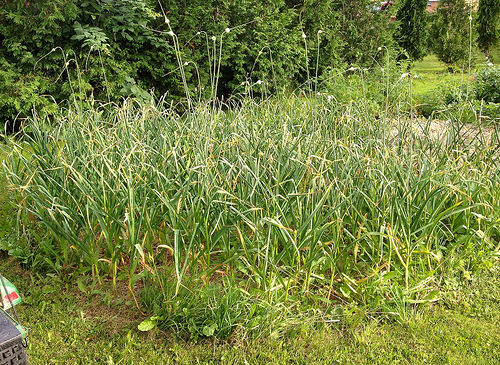
I’m a little obsessed. I love growing garlic. I love eating it too of course.
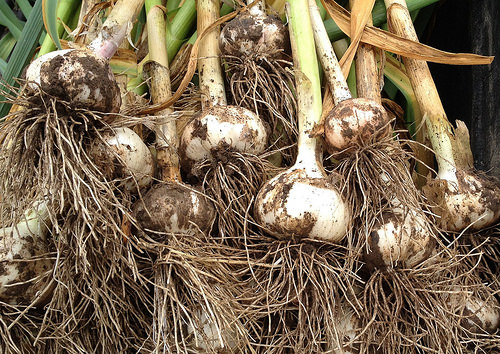
I love the smell of it. I love the earthy goodness of it. I love roasting it and using it in salad dressings, or marinating with it.
Back at the end of July I harvested my garlic crop, which I had planted at the farm the previous autumn. I planted around 300 cloves, and yielded around 280 give or take a few with rot. The precise yields were:
- Music: 85 heads
- Leningrad: 55 heads
- Hungarian: 64 heads
- Purple Glazer: 35 heads
- Siberian: 34 heads
- Korean: 8 heads
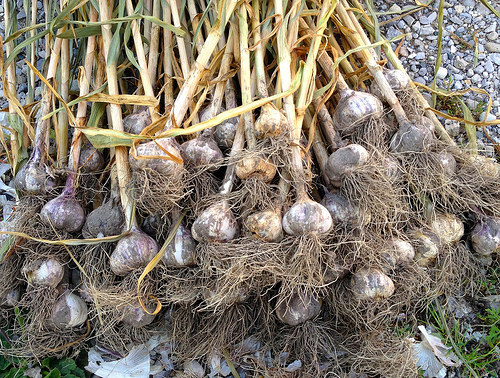
All the garlic did very well except the Korean and the Hungarian. The Korean did poorly likely because I used cloves from my immaturely harvested crop from 2013. The Hungarian seemed more susceptible to fungus than the other varieties. I’ve been researching this and thankfully it doesn’t appear to be white rot, a soil-based fungus that renders land unsuitable for allium crops for literally decades, and is almost impossible to control. Based on my research, I think the problem instead was fusarium basal plate rot, another soil-borne pathogen that affects the root system. This form of rot however is not quite so dramatic as white rot, and can be controlled by rotating crops regularly. And since the other varieties didn’t have it, I have to assume Hungarian is particularly sensitive to it.
I moved my harvest into the storage barn at the farm to dry, where there is plenty of room, but not the best air circulation. I did set up a fan, and the crop looked great when I trimmed off the stems and roots. Unfortunately, the heads were not as dry as they should have been when I packed them up to come home. I should have pulled them out of the paper bags immediately after I got them home but I didn’t, I left them in their bags for a few days. When I looked in on them again, I realized they were starting to mould!
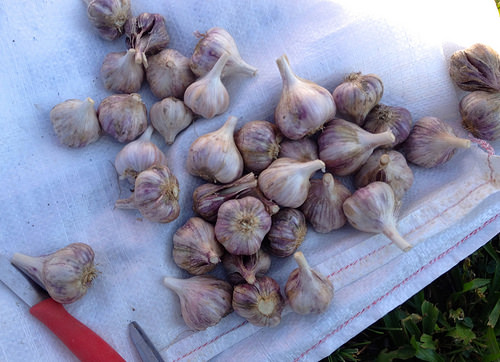
Once I realized my mistake I pulled them all out and put them on trays and let them sit out in the sun for a couple days on my deck. This stopped the mould process but the skins were already marked up and blackened; they looked really bad. Thankfully, I’ve realized that the mould was really only on the outer skins. I leave as much skin on the heads as possible as it helps the heads keep longer. Peel back a few layers of skin and the heads look just fine.
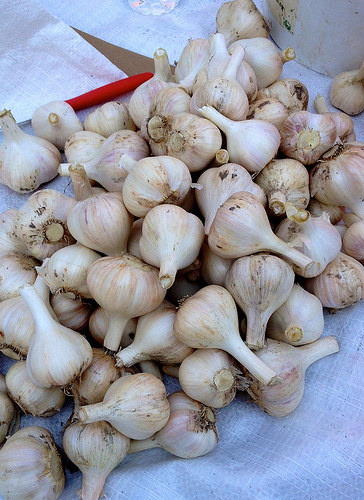
While my gardens at the new house are slowly starting to come together, I have yet to get all the soil I need into my raised beds, and even after I do, the farm is still a better fit for this space-intensive crop. Most of the veggies I grow at home are short term crops that don’t need to be in the garden for more than a few months. Garlic gets planted in the fall and harvested in late July or early August, so it’s a bit of a space hog.
My 2015 garlic crop went into the ground a couple weeks ago during that gorgeous stretch of summer-like weather we had. Again I planted just over 300 cloves, but this time I’ve got 9 varieties: Music, Leningrad, Purple Glazer, Siberian, Hungarian, Korean, Russian Red, Ukrainian and Persian. Next year I hope to pickle some of the scapes, something I haven’t tried yet.